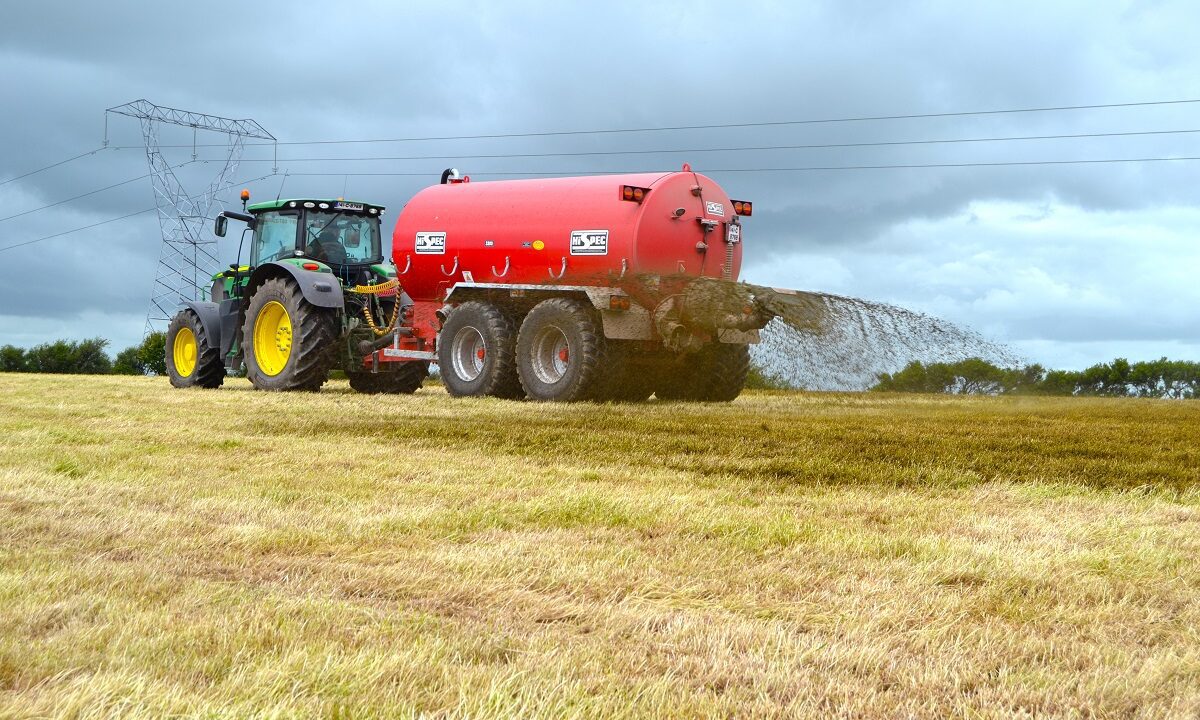Exporting slurry has been mentioned as an option for dairy farmers who find themselves exceeding the 220kg limit of organic nitrogen (N)/ha as required by the Nitrates Directive.
Ireland’s nitrates derogation currently allows farmers to farm at higher stocking rates, above 170kg livestock manure nitrogen (N(/ha up to 250kg N/ha.
A new reduction in the nitrates derogation is due to come into force from January 2024 which would reduce the limit from 250kg to 220kg of organic N.
It is estimated that this reduction will have an impact on around 3,000 dairy farms across the country.
The export of slurry has been suggested as an option for many who are seeking to maintain cow numbers, but are above the 220kg of organic N currently.
Exporting slurry
The biggest issue with exporting slurry is the fact that the N content of the slurry has been reduced from 5kg/t to 2.4kg/t by the Department of Agriculture, Food and the Marine under nitrates regulations.
This ultimately means that, compared to just a couple of years ago, you need to export twice as much slurry to meet the same reduction in organic N.
Taking an example of a farm of 50ha that is stocked at 245kg of organic N/ha, this farm from next January, would then be exceeding the legal limit by 25kg/ha or 1,250kg of N over the whole farm.
The conversion rate is that 1t equates to 1m3 or 1,000L of slurry, meaning this farm would need to export 521t of slurry (521,000L) of slurry to get below the new maximum stocking rate of 220kg of N.
A dairy cow produces 0.33m3/week according to DAFM. Basing this off a 18-week storage requirement, this means that one cow would produce 5.94m3.
So, for this farm to meet the reduction to 220kg by exporting slurry, it would be the same as exporting slurry from 88 cows.
An example such as this raises the question as to whether this is a viable option for many farms and if other options also need to be looked at.
Options
Exporting slurry could be an option for farms that are closer to the 220kg of organic N limit, but exporting slurry alone is not going to work for farms at the higher end.
Apart from the sheer volume of slurry that would need to be exported, the cost of exporting this would be significant and then you also have to find farmers willing and able to take it.
This could result in a major competition between dairy and pig farmers to get slurry off their farms.
Farms at the higher end of the scale will likely have to make use of a number of options, including:
- Exporting slurry;
- Contract rearing;
- Renting, leasing or purchasing land.
For farms that find themselves in the position where they are close to 250kg of organic N/ha, a plan needs to be developed over the coming months.
Removing the cows to drop below the limit would result in a considerable reduction in farm incomes, but renting or leasing extra land could also have a similar impact.
It is also important to remember that slurry is a valuable fertiliser on farms and should be used within the farm gate to increase sustainability.
